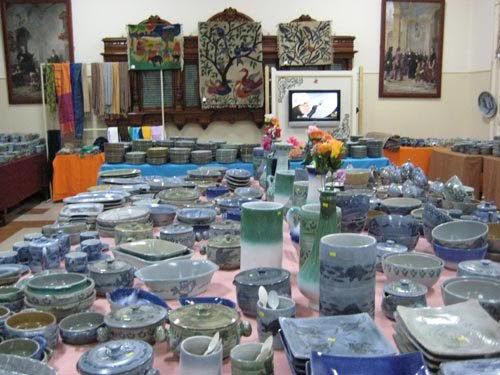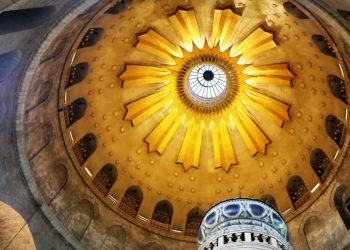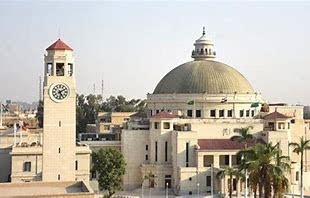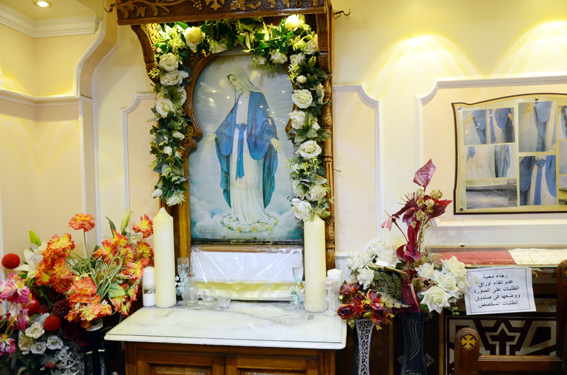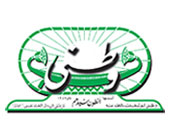Long before the ancients began to look on art as a means to an end, they were carving or painting depictions of humans and animals on rocks and inside caves as a form of sympathetic magic to aid success in the hunt. Then, in about the seventh millennium BC, pottery began to appear in the Middle Eastern region, and before long the concept of simple decoration had emerged.
In pre-dynastic Egypt pottery was mainly used for household purposes. The pottery produced at this time was of very high quality compared with much of that found elsewhere. The clay was at first shaped by hand or using moulds, but after the wheel was invented it was turned by hand, and later by foot. The ancient Egyptians developed their style and technique using both ‘Nile clay’ (Nile silt), which was used mainly for domestic purposes, and ‘marl clay’, which was obtained from Qena in Upper Egypt and was shaped into pieces that were superior in quality and used for decorative purposes.
Pottery usually retained its natural reddish brown colour and was decorated with thumbnail or tooled patterns, and later with animals, boats or human figures. Glazing was not introduced until the Roman period. Because Egyptian pottery varied in style, techniques and colour from one period to another, it is often used by archaeologists to determine the approximate date of related finds.
In the last century hand-made pottery ware was replaced by factory-made items, and by items of plastic and other materials. However, potters still ply their craft in some villages, where they struggle to keep the craft of their ancestors alive.

Hard times
Watani travelled to the heart of Upper Egypt, to the village of Garagos in Qena governorate, some 650km south of Cairo, to visit its pottery factory and investigate the difficulties the workers are facing to keep it running.
We were welcomed by Hebeshi Kamel, commonly known as Riad Kamel, a partner in the factory and one of its leading artists. Mr Kamel complained of the drop in the factory sales as a result of the downturn in Egypt’s tourism industry over the past five years.
“The village of Garagos is a mere 30km away from Luxor, so many tourist groups used to visit our factory every day and we used to sell our products directly to them. But this is not the case anymore now; the only people who come here on daily basis are the workers. The only outlets where we sell our products are two annual exhibitions; the first is held in December at the School of the Holy Family in Cairo, which is run by the Jesuits. The second is held in May at St Mark’s College in Alexandria.” This year’s exhibition is now on and runs till Friday 20 May.
Mr Kamel says factory production is sold only on the local market, and that it faces fierce competition from machine-made imitations which are sold at lower prices. “We cannot compete with these low prices because our products are hand-made and are pieces of art. They are made with precision and consume a lot of time and effort. Since we no longer have a regular source of income, we find ourselves unable to pay our workers’ wages. Sometimes we pay them from our personal accounts, or resort to a bank overdraft until one of the exhibitions is held to make some profit; but even these exhibitions, unfortunately, are not as profitable as they once were.”
The Garagos brand
Artist Fawwaz Sidhom [no relation of the Watani Sidhoms] says that he and his fellow partners struggle to keep the factory running. “It would be a shame to close down a place with such history, which has been visited by royalty, politicians, ambassadors and many other public figures since the day it was established,” he says. Mr Sidhom thinks the State should be helping the factory associates to market their products, which are highly renowned on the local and international levels. Tourists from all nationalities and walks of life came to this primitive village tucked in the heart of the Nile Valley to buy traditional products as souvenirs.
“The factory’s name, ‘Garagos’, appears on the bottom of all our products; it is either engraved after the product is glazed or written in relief. Garagos has become a brand for a product with history and craftsmanship, and foreigners cherish our products as souvenirs from Egypt,” he says. “Unfortunately we don’t have the means to export our products, but Egyptian tourist bazaars buy our pottery and sell it to their customers abroad.”
The downturn in tourism that followed the Egyptian Arab Spring in 2011 has had a serious effect on the Garagos factory which has since been complaining of a steep decline in sales. The factory management fears they face the grim fate of closure.

The Jesuits’ role
The Garagos story dates back to the early 1940s when Father Henry Ayrout, a prominent Jesuit who is considered by many the father of social development in Upper Egypt, lived there for a few years and established a primary school for the villagers. In 1945, two other Jesuits, Fr de Montgolfier and Fr Fenouyl, settled in Garagos; they learnt Arabic and started up social development projects there. The idea of pottery was suggested by French archeologists who were conducting nearby excavations. Fr de Montgolfier was enthusiastic about the project and asked his nephew Robert, an expert potter, to come from France to train the Garagos villagers. Fr de Montgolfier contacted the renowned architect Hassan Fathy, the master of sustainable architecture, to build the factory in traditional Egyptian style. By 1955 French and Swiss potters were working hand-in-hand with the village youth and teaching them to master the techniques of pottery making; these young men acquired the skill and held their first exhibition that same year. In 1956, the foreigners were forced to leave in the wake of the Suez War, but the Garagos potters showed enough competence to run the factory on their own.
For several years the factory was owned and managed by the Jesuits. In 1966 it was turned into a cooperative under the administration of the first five Egyptians who worked in it, so that all profit would go to all who worked in the factory. Today the buildings and the land on which the factory stands have moved into the hands of the Coptic Catholic Patriarchate of Luxor.
The five administrators were Youssef Fahmy Ibrahim, Thabet Labib Yousef and Nosseir Ranan Bekheit who have now all passed away, as well as Hebeshy (Riad) Kamel Hebeshy and Fawwaz Sidhom Sefein who still run the factory.
Greenware
We were given a tour of the factory to see the stages involved in the pottery making process. In the first, the filtering phase, the silt, which has been brought from Abul Reesh in Aswan in the form of rocks, is placed in a barrel where it is immersed in water. This is all pumped through ducts which contain three straining cycles to filter the water and silt mixture from impurities. It is then left in a basin for a day so the clay forms a deposit. The water is then drained off and the resulting clay covered with burlap and stored in a special room for two months, during which time it is watered daily.
The clay is then vacuumed using a special machine to remove any air particles; this makes the clay more cohesive and ensures that it will not break during or after the shaping process.
The resulting wet limps of clay are shaped into the required forms. This is done by either putting the clay into special moulds or using the potter’s wheel, which is usually used to produce objects having symmetry along a vertical axis. The potter’s wheel consists of a turntable called the wheel-head connected to a larger lower wheel by means of belts. The potter turns the lower wheel using his foot, this making the upper wheel turn too; three such wheels are used in Garagos.
The shapes of the pottery are usually inspired by the surrounding environment to meet customer and market demands. They are often adorned with hand-painted pharaonic and religious motifs and include cookware and tableware, decorative items, and figurines representing Egyptian folk art.

Finished product
The shaped pottery items, often called greenware, must then be dried and are therefore placed in a special drying room with natural ventilation. Pottery must be completely dried before it is fired because even the smallest percentage of moisture in the clay can lead to a defect during the firing process.
The following phase consists of firing the product in a kiln at a temperature of 1,000 degrees Celsius; the product is then cleaned and polished. Some of the pottery items are kept in their natural colour, but most are glazed in the characteristic colours of blue, made from cobalt; pharaonic green made from copper oxide; and yellow, made from antimony oxide.
After the glazing phase the objects are fired for a second time in the 1,000-degree kiln to fix the glazing. After this last stage is finished the product is ready for the market.

Royal visitors
The Garagos pottery factory has seen better days. Renowned for its unique hand-made pottery, the factory had an important place on the area’s touristic map.
In 1986, during an unofficial visit to Egypt, King Karl XVI Gustav of Sweden and Queen Silvia visited the village of Garagos and were warmly received by the local residents. Some people remember how, a few days before the visit, the authorities paved the village roads almost overnight. The Combonian nuns who used to work at the local school and dispensary invited their fellow nuns who served in all the villages of Upper Egypt to come and meet the King and Queen. People were unsure what to offer their royal guests… Tea? Coffee? Cake and cookies? After endless deliberations, it was decided that the King and Queen should be offered traditional local food and beverages. The nuns therefore prepared karkade , (hibiscus tea) and tamr hindi (tamarind juice) and, because the visit coincided with the Islamic feast of al-Mawlid al-Nabawi (Prophet Muhammad’s birth), they were offered the traditional sweets of Halawet al-Moulid. The King and Queen visited the pottery factory, toured the village and ended their visit with a walk in the countryside. The Swedish Embassy later called the Garagos factory officials to tell them that the day spent there was the most memorable the Royal couple had during their Egypt visit.
Watani International
18 May 2016


